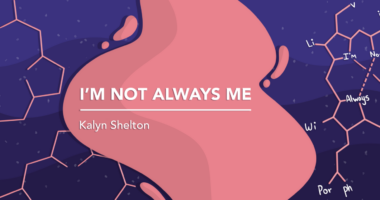When There’s No Getting Better: How I Live With Disease Permanence

The U.S. healthcare system is good at helping people in crisis get over the hump. But what if your disease is chronic? What if your life is the hump?
Four years ago, I was diagnosed with acute hepatic porphyria (AHP). I was in a severe disease state and had been for quite some time. Overjoyed to have an explanation of the symptoms that had plagued me for nearly two decades, I was ready to heal and get back on track.
Unfortunately, my doctors couldn’t tell me what to expect long-term. Assuming the best, they surmised that my series of attacks was a blip, a rough patch I’d get through using trigger avoidance and a hemin infusion or two.
It wasn’t unreasonable to think my health would improve dramatically with an understanding of the disease. But like others who’ve lived with prolonged, untreated AHP, it didn’t work that way for me.
There’s not much known about chronic AHP symptom severity, and outcomes vary wildly from patient to patient. So, while I appreciate my care team’s optimism, it certainly didn’t prepare me for a life of frequent attacks and long-term disease management. The permanence of my rare disease is the hardest thing to accept.
How I set expectations
Living with AHP calls for flexible and evolving expectations.
In the early days of diagnosis, denial ruled my actions. I attempted to train for races, but I couldn’t manage even short interval runs without stumbling over the lip of the trail and doubling over in pain. I continued working full time, even though my weeks were increasingly interrupted by half-day treatments, followed by days of recovery.
It didn’t help that my medical team encouraged me to go on living life as usual, conveniently disregarding that everything had changed. They were acting as if my rare disease was a back injury that would heal or a broken arm they could repair. Everyone was trying to get me over the hump.
I’ve met people with AHP whose attacks diminished after menopause or prolonged adherence to treatment protocol. For a long time, I used their experiences as an emotional way out, because the unknowns of living with a rare disease like AHP are scary.
Yes, it is possible that with time and treatment my body will gain stability. But I couldn’t continue to wait for the morning I’d wake up feeling like my old self. That misguided expectation became more damaging than accepting my disease state, with all its layers of uncertainty.
How I live with the unknown
Uncertainty used to eat me alive, but it’s become more manageable over time. Thanks to some of the following big life changes, I’m learning to accept the permanence of my disease:
- I broadened my knowledge base of AHP, learning from research studies, the American Porphyria Foundation, and fellow patients in similar disease states.
- I observed patterns in my body over time, without judgment. Instead of forcing the pieces into place, I shifted my expectations to acknowledge that the game itself had changed.
- I interviewed medical providers until I found a whole group of them who won’t try to fix me, who understand the chronic nature of my disease, and who are comfortable with where their support fits.
- I adopted a self-compassion and mindfulness practice that encourages me to calmly live in the moment.
I’ll never truly know what to expect with my health. My body will do what it does, and I’m done losing sleep over it.
How I embrace the hump
We look to the medical community for answers and guidance. Our local doctors often set expectations, even for diseases they have never seen or treated. Those of us living rare are left to define the truth in our own lives.
Along the way, we will meet health providers who will question our illness and try to push us over the hump. As we learn about our disease, we will set expectations that disappoint others and ourselves. Eventually, perhaps without realizing it, we will become confident experts on our own bodies.
A burning desire to know what’s next is natural. But for those of us with rare disease, we’ve already faced the unknown and survived. Living on the hump doesn’t have to be stressful.
***
Note: Porphyria News is strictly a news and information website about the disease. It does not provide medical advice, diagnosis, or treatment. This content is not intended to be a substitute for professional medical advice, diagnosis, or treatment. Always seek the advice of your physician or other qualified health provider with any questions you may have regarding a medical condition. Never disregard professional medical advice or delay in seeking it because of something you have read on this website. The opinions expressed in this column are not those of Porphyria News or its parent company, Bionews, and are intended to spark discussion about issues pertaining to porphyria.









Comments
Carol-Lynn
Thank you for such a well written and enlightening article. You have managed to get across the message of what most of us live with daily. The only difference is in the severity. Yes living with an AHP once it has been triggered, when the beast has woken up, then we seem to battle chronic long term health problems.
Thank you for sharing your experience.
Claire Richmond
Hi Carol! "When the beast has woken up" I couldn't put it better myself! Thank you for reading and sharing your experience too. It's so nice to know we aren't alone! - Claire